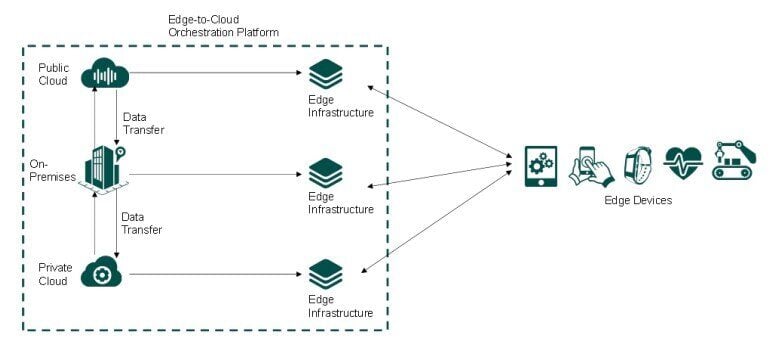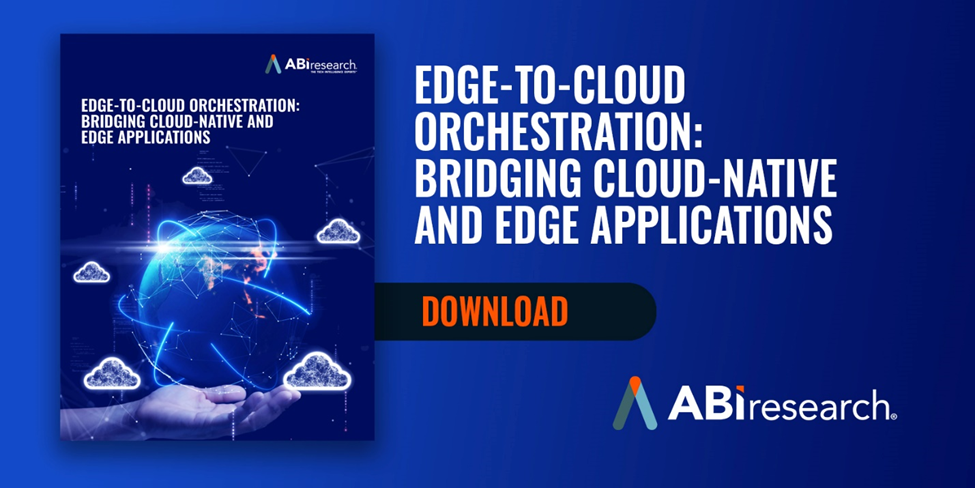Historically, enterprise data have been generated, processed, and stored in a centralized data center. However, centralized data centers are not capable of providing the real-time computing capabilities that digitized businesses require for real-time applications. A superior option is to use edge-to-cloud, whereby data are generated/processed on-site closer to the source and stored in the cloud. Edge-to-cloud platforms provide the low latency and real-time information flexibility that modern enterprises demand.
What Is Edge-to-Cloud?
Edge-to-cloud is a strategy that involves generating/processing organizational data at the edge of a network and leveraging a centralized cloud platform for data storage and distribution. In the modern business environment, whether it’s an Industrial Internet of
Things (IIoT) device or a mobile robot, various applications generate large volumes of data in operations. To convert these data into actionable insights, data must flow seamlessly between edge devices, the cloud platform, and the centralized data center.
However, data centers are under increasing pressure as businesses digitize and demand more robust computing capabilities. This is a significant challenge, especially for mission-critical applications like drones and Automated Guided Vehicles (AGVs) that require real-time processing. Unfortunately, real-time data processing isn’t always possible when routed through a centralized data center. This is where edge-to-cloud computing comes in, moving processing closer to the source. This local data processing reduces latencies and accelerates the time it takes for decision makers to derive insights from applications, offering a significant competitive advantage. However, it should be noted that centralized data centers are still needed for further data analysis.
Related Tech Intelligence from Our Analysts
Industry Cloud Platforms: Creating a Cloud Ecosystem to Accelerate Industry Transformation
Bringing Intelligence to the Edge: Edge AI-as-a-Service to Accelerate Distributed Intelligence
Components of Edge-to-Cloud
An edge-to-cloud architecture comprises four key components: the cloud platform, on-premises infrastructure, edge infrastructure, and edge devices.
- Cloud Platform: A central data hub where organizations can store and process data. These software platforms, offered by companies like Amazon Web Services (AWS) and Microsoft Azure, can be hosted in public and private cloud environments.
- On-Premises Infrastructure: If a business application is unsuitable for cloud computing, it will be hosted on on-premises infrastructure (e.g., servers, computers, on-premises data centers, etc.).
- Edge Infrastructure: Edge servers, gateways, and nodes connect edge devices with the data center/hybrid cloud platform. By being close to the data source, this equipment facilitates low-latency applications.
- Edge Devices: Data collection is only possible by deploying edge devices such as cameras, sensors, etc. Edge devices transfer data from business applications to the edge infrastructure, enabling organizations to make quicker decisions.
Figure 1: Example of an Edge-to Cloud Orchestration Platform

(Source: ABI Research)
Why Edge-to-Cloud Is Needed
ABI Research posits that edge-to-cloud orchestration will significantly impact the future trajectory of cloud computing. Already, companies like Hewlett-Packard Enterprise (HPE) and VMware are helping organizations improve their operations through edge-to-cloud solutions. Emerging technologies such as Artificial Intelligence (AI)/Machine Learning (ML), robotics, and smart Internet of Things (IoT) require reliable computing, often on-site. Without lightning-fast computing, businesses will struggle to unlock the full data-driven benefits of their newly adopted technologies. Moreover, some critical applications can be unsafe if latencies are too slow. For example, an AGV must have real-time data processing capabilities to safely react to obstacles in its navigation path.
Below are the key benefits of edge-to-cloud:
- Efficient Data Processing: When cloud computing resources are placed at the edge, organizations gain real-time data processing and make business decisions faster.
- Operational Transparency: Organizations can better monitor/manage hybrid cloud platforms using edge-to-cloud orchestration, removing data silos.
- Scalability and Flexibility: Cloud computing is inherently scalable, providing organizations greater deployment flexibility for new technology applications (e.g., edge AI, cobots, etc.) placed at the edge of a network.
- Robust Security: Sensitive data are more secure when computing is done locally at the edge. Moreover, some privacy regulations mandate that customer data be stored and analyzed at the edge. An edge-to-cloud platform allows organizations to keep sensitive data at the edge and transfer the rest of the data to the cloud.
Seizing the Edge-to-Cloud Opportunity
As enterprises continue their digital transformation journeys, edge computing will be increasingly necessary. By fusing edge applications with cloud computing, organizations can ensure that business applications run without hiccups and that data-rich insights can be retrieved in near real time. Moreover, processing and storing data in the cloud provides a level of scalability that is impossible with just a centralized data center.
ABI Research recently analyzed the edge-to-cloud architecture to help enterprises, cloud solution providers, and data management platform vendors gauge its importance to business success. In addition to use cases, technology underpinnings, and investment forecasts for edge-to-cloud, our analysts assessed how the following companies are catering to the demand for cloud-based solutions at the edge:
- AWS
- HPE
- Microsoft Azure
- Red Hat
- VMware
To access these insights, download ABI Research’s Edge-to-Cloud Orchestration: Bridging Cloud-Native and Edge Applications report today.

